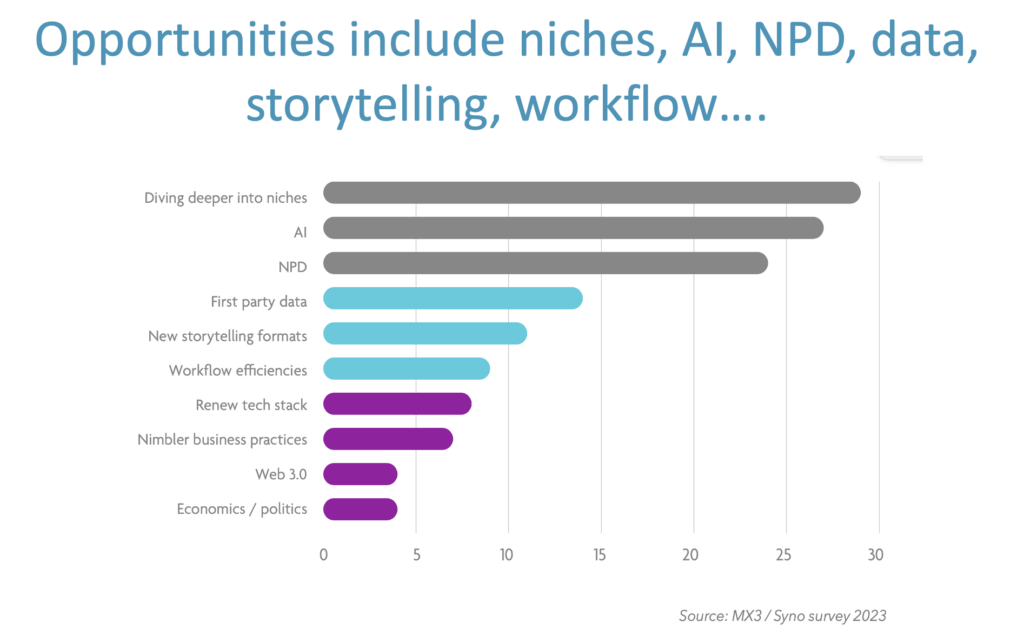Global magazine circulation revenue is declining, and the digital share of revenues is growing. Meanwhile publishers are ever more focussed on subscriptions. Where does that leave print newsstand? Is it the end of the retail channel for magazine publishers? Maybe not quite yet.
At DistriPress, the annual international gathering of publisher circulation heads and magazine distributors, there was plenty of evidence of innovation and new thinking to broaden the range of publications available in physical and digital stores.
Major challenges for publishers
It is not surprising that newsstand sales are not top of mind for publishers, as they are actively exploring new revenues, from events to e-commerce, subscriptions to marketing solutions.
But while subscriptions are important, churn rates are rising, so all publishers need to continue to sample new customers and build loyalty to maintain their reader base.
Publishers are very focussed on AI, data and tech and the investments they need to make to exploit these trends.
But they are also aware that audiences are evolving and reading behaviour is changing, creating opportunities to target emerging niches and launch new products.
Regional variations are still significant. While digital is taking a growing share of circulation revenue in Western Europe and North America, in regions like Asia/Pac, CEE and LatAm, print is still dominant.
How to innovate at retail in a complex environment
But there are opportunities to use both physical and digital retail channels to reach new customers and stimulate interest in established and new magazine brands.
- As more data is available, and distributors and retailers start to employ AI, it will become easier to predict demand trends, identify new retail outlets and optimise range.
- Digital retailers have granular data on reading behaviour which can provide an insight into how readers combine print and digital magazines
- New titles targeting emerging niches – such as Sloft in France, for small apartments – are adding interest to the sector.
- While standard magazines are $11 in US outlets, new formats such as glossy poster magazines or multi-item fan packs are retailing for as much as $25 – showing that innovation can drive premium prices.
- Magazine brands and content can be repackaged into stationery, calendars, and other print collectibles
- Digital retailers can provide a strong channel for magazine archives – such as MotorSport’s curated archive of specials going back to 1924 available on Readly.
- Digital retailers offer publishers an opportunity to test pricing and covers in different regions before taking the plunge in print
- Bricks and mortar retailers are at the early stages of collecting data via customer loyalty programmes, enabling targeted offers and promotions based on past purchases.
- In the US, international magazine editions enjoy novelty and scarcity value and can make up to 30% of revenue in some retailers
- In the book publishing sector, Booktok has driven excitement about books among younger demographics – could social media influencers be enlisted to do something similar to market magazines?
Collaboration to grow retail circulation sales
And most importantly, magazine publishers could consider collaborating on marketing and innovation to promote the entire category at retail, rather than focussing on market share.
So by embracing the potential of retail sales data and using both physical and digital outlets to test new product ideas, publishers can reinvigorate newsstand sales and develop a profitable way to acquire new readers.
About the author
Carolyn Morgan has acquired, launched, built, and sold specialist media businesses in print, digital and events. She now advises niche consumer and B2B publishers on developing new products and digital revenue streams as a consultant and NED.
Find out more about the advice we provide for publishers

